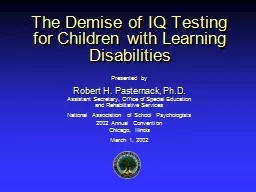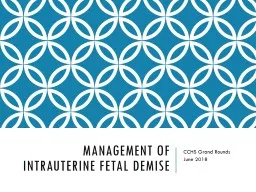PPT-The Demise of IQ Testing for Children with Learning Disabil
Author : min-jolicoeur | Published Date : 2017-04-11
Presented by Robert H Pasternack PhD Assistant Secretary Office of Special Education and Rehabilitative Services National Association of School Psychologists
Presentation Embed Code
Download Presentation
Download Presentation The PPT/PDF document "The Demise of IQ Testing for Children wi..." is the property of its rightful owner. Permission is granted to download and print the materials on this website for personal, non-commercial use only, and to display it on your personal computer provided you do not modify the materials and that you retain all copyright notices contained in the materials. By downloading content from our website, you accept the terms of this agreement.
The Demise of IQ Testing for Children with Learning Disabil: Transcript
Download Rules Of Document
"The Demise of IQ Testing for Children with Learning Disabil"The content belongs to its owner. You may download and print it for personal use, without modification, and keep all copyright notices. By downloading, you agree to these terms.
Related Documents














![[READ]-Unit Testing Principles, Practices, and Patterns: Effective testing styles, patterns,](https://thumbs.docslides.com/989778/read-unit-testing-principles-practices-and-patterns-effective-testing-styles-patterns-and-reliable-automation-for-unit-testing-mocking-and-integration-testing-with-examples-in-c.jpg)